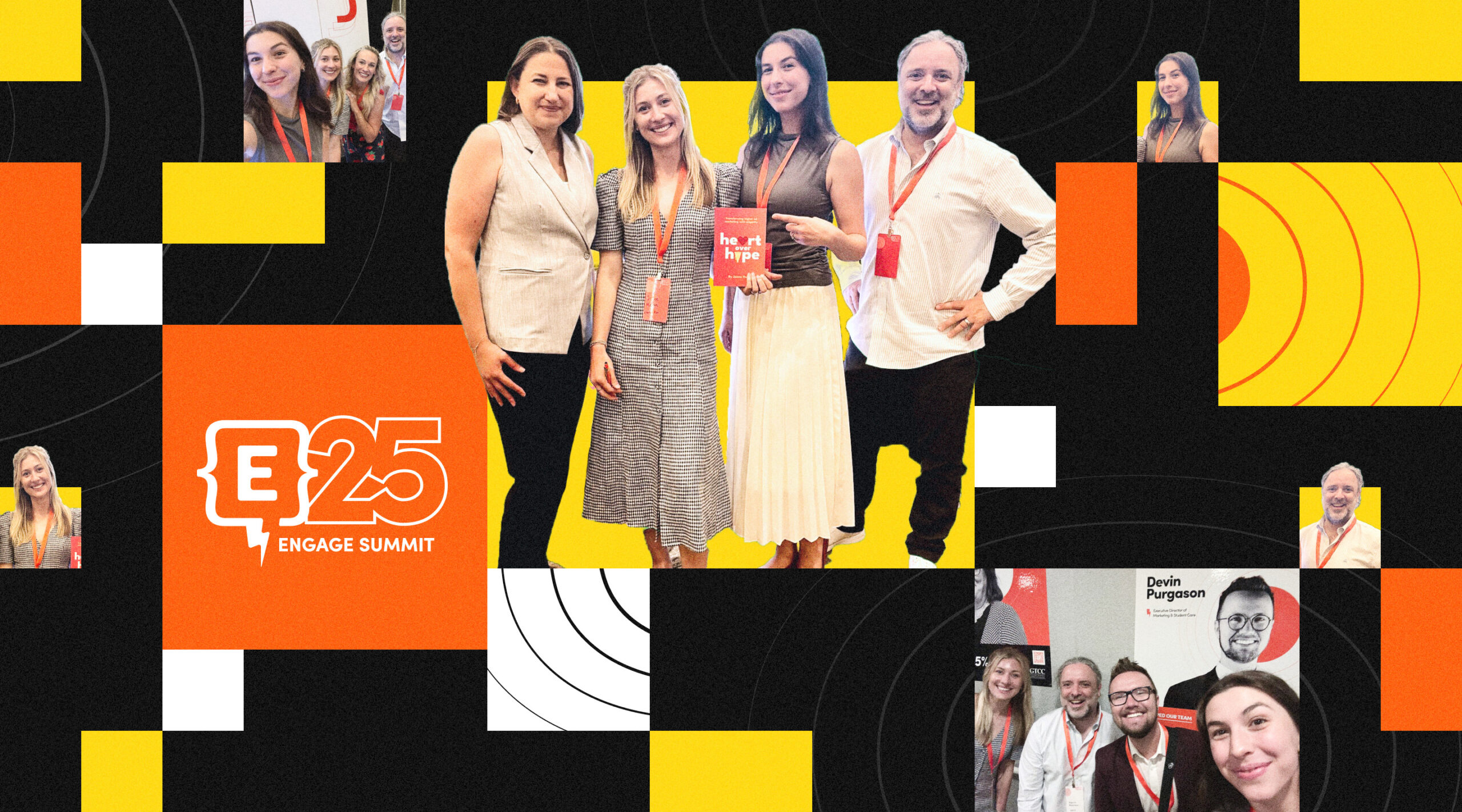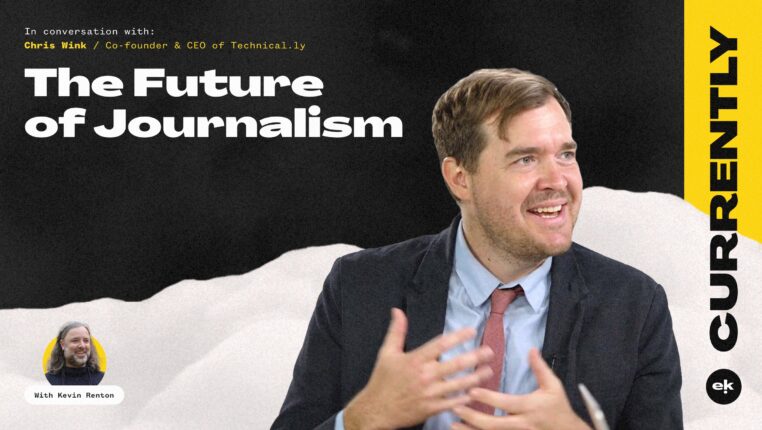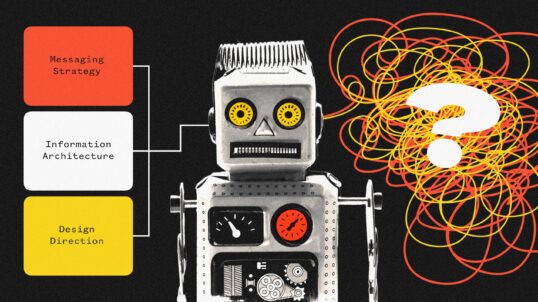Artificial intelligence might be the flashiest topic in tech right now, and it was the driving force behind last month’s Engage Summit, which several of us attended.
What we heard there mirrors what we are experiencing as we adopt AI processes across our agency (and in our own lives): Success with AI isn’t about chasing perfection or automation for its own sake — it’s about keeping humans at the center, staying flexible, and building with curiosity.
In other words, it’s a design-thinking problem.
If you’ve worked with us before, you know we talk a lot about design thinking. It’s at the core of how we work — with our clients and with each other. So it’s no surprise that some of the key components of design thinking (human-centered, iterative, non-linear, and collaborative) are also the ones we see echoed in effective AI integration.
Below, we explore how these principles shape both how we use AI and how we help our clients implement it.
1. Human-Centered: AI Should Make Us More Human, Not Less
One of our favorite quotes from Engage was this: “AI helps us be more human.”
That might sound counterintuitive, but it reflects a truth we see across projects. AI can handle the repetitive, the templated, the scalable, giving people more space to focus on nuance, empathy, and connection.
For our team, this means helping clients use AI to reduce friction (like auto-sorting leads or tagging content), so they can spend more time actually engaging with prospective students, volunteers, or donors.
It also means we’re constantly asking: Who is this for? What problem are we trying to solve? We use collaborative workshops, interviews, and surveys to make sure we’re solving the right problems for the right reasons, and grounding our projects in real insights from real people.
2. Iterative: 80% Is Often Enough
One of the most common themes at Engage was that perfection shouldn’t get in the way of progress.
AI tools don’t — and shouldn’t — launch with the assumption that they are fully baked. They require ongoing refinement based on real-world use and feedback. That’s exactly how we guide our clients through any digital transformation, AI-related or not: start with a hypothesis, implement it, test it, and improve it.
Whether we’re building a new chatbot or launching an email workflow, we design with agility. We embrace the 80% solution and rally stakeholders around continuous iteration, because the last 20% is often where collaboration shines brightest.
3. Non-Linear: Build with Feedback Loops, Not Checklists
AI implementation isn’t a linear project with a beginning, middle, and end. It’s a living system. The product changes. Your audience changes. Compliance changes. Internal politics change.
That means teams need to stay responsive and adapt as things evolve.
With design thinking, we work in loops, not lines. In our discovery workshops, we make space for the unexpected. We surface problems that aren’t always on the brief but are essential to solve. It’s also why we lean into AI tools for research, brainstorming, and content audits. They give us more ways to explore, identify gaps, and pivot when needed.
A great example from Engage: one school’s chatbot uncovered a previously unnoticed pattern in user questions, helping the team identify a major content gap. That’s the kind of insight AI can deliver — if you’re listening.
4. Collaborative: AI Helps Us Work Together, Faster
AI lowers the barrier for everyone on a team to participate. It lets anyone quickly generate ideas, drafts, wireframes, or mockups, even outside their typical role, breaking down silos between departments.
A strategist might mock up a dashboard in a no-code AI tool before passing it to design. An enrollment specialist might sketch a chatbot flow before sharing it with a developer. A client might use AI to surface trends in user behavior before bringing them to a workshop.
The point is, AI creates shared momentum. It gets us all to the table with something to react to and something to build on. And that’s where collaboration thrives.
So, what’s next?
We’re not calling ourselves “AI experts” (spoiler: no one really is.)
But we are skilled facilitators, creative problem-solvers, and enthusiastic testers. And that’s what our clients need most right now: someone to help them bring new solutions, including AI, into their organization in a way that’s thoughtful, strategic, and genuinely useful.
That’s what design thinking is all about. And it’s why it remains our foundation for helping clients adopt AI in a way that truly works.



